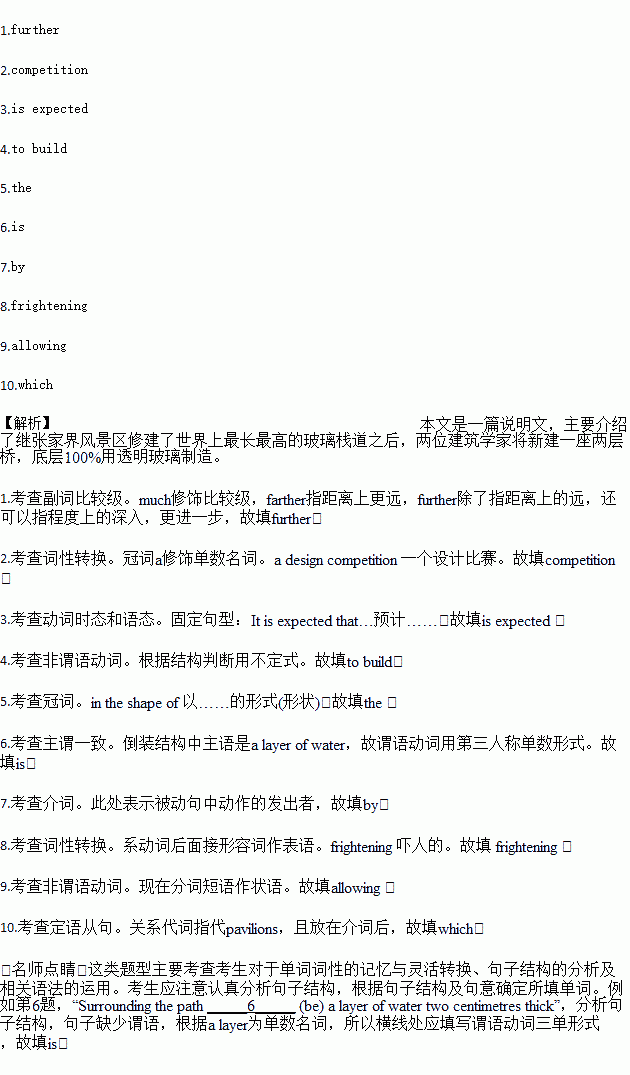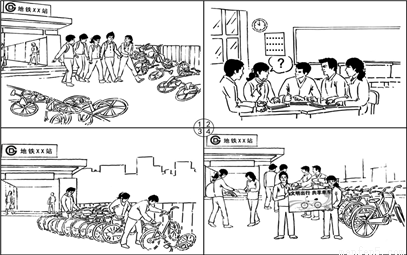题目内容
Zhangjiajie is already home to the world's longest and tallest glass bridge, but now architects have gone much 1. (far).
Two world?famous architects, who won a design 2. (compete), have designed a transparent footbridge. It 3. (expect) that it will cost over £4 million 4. (build).
The bridge will be made up of two layers, so there are some options for nervous visitors. The upper level that connects the two rock faces is in 5. shape of a disk and doesn't have a see?through floor. A winding black stone path leads fearless explorers from one peak to the other. Surrounding the path 6. (be) a layer of water two centimetres thick, which is sprayed onto the path every seven minutes 7. special equipment creating a temporary cloud and mist.
However, the lower level is where things start to get really 8. (frighten). The floor is 100 per cent glass, 9. (allow) brave visitors to look at the valley below. As well as walking across the hair?raising bridge you can also sleep in one of three pavilions(楼阁), all of 10. offer incredible views.
 名校课堂系列答案
名校课堂系列答案

 ),并在其下面写出该加的词。
),并在其下面写出该加的词。 )划掉。
)划掉。 ub are urging everyone to feed a “silent guest” at this year's Thanksgiving. These students have been holding fund?raisers for the World Food Programme (WFP) and trying to get people to join their “silent guest” plan.
ub are urging everyone to feed a “silent guest” at this year's Thanksgiving. These students have been holding fund?raisers for the World Food Programme (WFP) and trying to get people to join their “silent guest” plan.